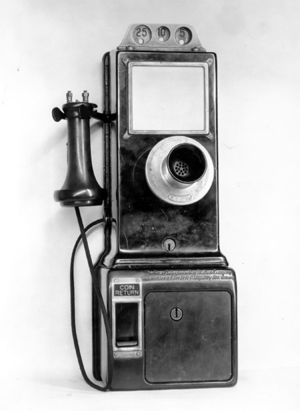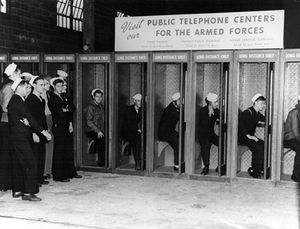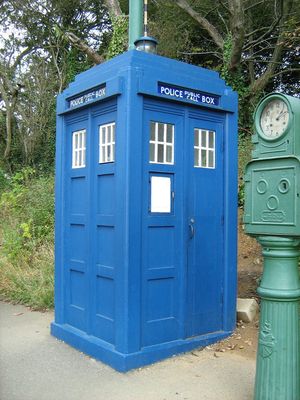Public Telephones
This article was initially published in Today's Engineer on July 2009
What did you do the last time that you needed to make a call away from your home or office? You probably did not seek out a public telephone and insert a coin or two in the slot. Though, if you are like most people, you can recall having done so. But you’d likely be hard pressed to remember the last time you did this instead of reaching for your cell. Pay phones may be retreating from memory today, but for most of the years since Alexander Graham Bell’s first telephone call in 1876, they were an important part of how people used the telephone network.
The first public phones and booths appeared in telephone company offices in the early 1880s. A customer could pay an attendant to make a call. One key innovation came in 1889, when Connecticut inventor William Gray, frustrated with having to beg use of a phone to summon a doctor when his wife took ill, devised the first coin-operated public telephone. He installed his first pay phone in a Hartford bank. In Gray’s patented design, coins of different denominations traveled down separate chutes where they struck bells and gongs that the operator could hear to verify the payment. Pay phones gradually spread across the country; by 1902 there were 81,000. Many of these were in places such as drug stores and train stations where they served the public at first ten and then five cents per local call. When making a toll call on these early pay phones, customers had to be careful to wait until the operator said how much money to deposit; there was no way for her to refund the coins. This remained a problem until electrical engineer Otto Forsberg of telephone manufacturer Western Electric invented the coin return in 1908. Then Western Electric working together with Gray’s company designed and introduced a standard pay phone, the Western Electric model 50-A (see picture) in 1911. Within a year, AT&T’s New York Telephone subsidiary had installed 25,000 in New York City alone, almost all of them indoors in wooden booths. Into the 1940s, public phones were more than conveniences for travelers. They were neighborhood phones as well, since no more than forty percent of the population had phones in their homes.
There were always people who wanted to save their nickels and cheat the system. Slugs became a serious problem in the 1920s when people discovered that industry standard washers would register as coins in pay phones. In 1927, the telephone company took 15,000 slugs a month from the pay phones in Detroit alone. Working with a committee of the American Standards Association, AT&T Chief Engineer (and 1927-1928 AIEE President) Bancroft Gherardi obtained agreement for revised washer standards, which after a variety of delays, ASA issued in 1933. The new washers worked fine in automobiles, but not telephones.
Over the years, the number of pay telephones continued to grow, as did the variety of their installations. During World War II, AT&T placed banks of booths at military facilities across the country so soldiers and sailors could call home. For most people, this was the first time they made or received a long distance call. The evening volume was so heavy that AT&T advertised that people not make long distance calls then so the lines would be open for men in uniform.
Outdoor booths first appeared in 1940s, and became common with the development of glass and aluminum booths in the 1950s. Installations where one could call from a car at the side of the road began dotting the highways in the 1960s. And in 1965, AT&T introduced its first redesign of the pay telephone — the single slot, flat fronted 1A1. Public telephone use continued to grow. By the mid 1990s there were over two million across the country. This number held steady through the end of the decade.
When cell phones were introduced in 1983, they hardly seemed like competition. They were expensive, and for the most part permanently installed in cars. But as prices declined, and the phones became small and portable, cell phone ownership spread, and pay phone use fell. As a result, the number of pay phones began an inexorable decline; by 2007 only 872,000 were left. And where they still exist, they may do so for unusual reasons. For example, in New York City, sidewalk pay phones are easy to find because they earn a profit to their owners and the city from the revenue brought in by advertising on the enclosures, even if no one ever makes a call.


